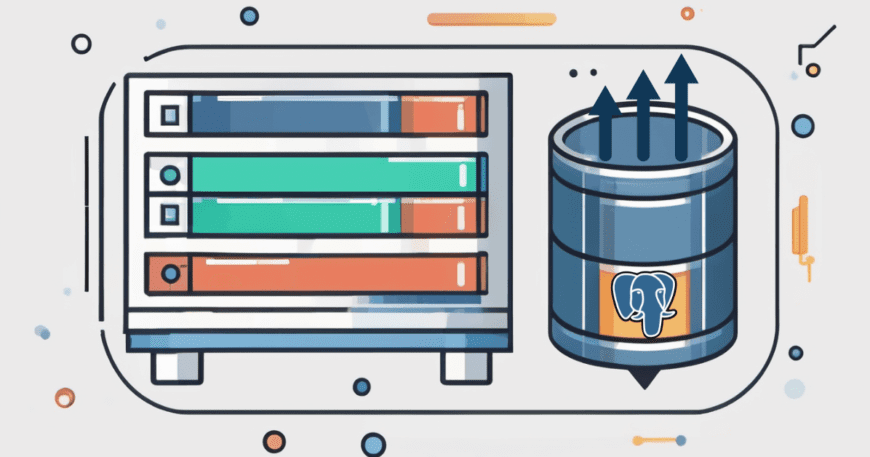As the new year approaches, IT managers everywhere are knee-deep in budget planning. With ambitious growth goals and ever-expanding data footprints, database infrastructure often ranks high on the spending list. But before you pull the trigger on that shiny new server rack, consider a powerful alternative: tuning your existing PostgreSQL for better performance and scale.
A surprising, and often overlooked, reality is that most deployed databases operate at a fraction of their true potential. Studies reveal that typical database deployments utilize only about 20% of their hardware capacity. This means your current setup could be silently suffocating under the weight of under-optimization, while your budget cries for expansion.
Maximize the bang for your buck
Instead of throwing money at the problem, why not unleash the hidden power within? By investing in PostgreSQL tuning, you can unlock hidden performance reserves and achieve remarkable results.
Boost Performance
- Optimize queries: Optimizing queries in PostgreSQL is crucial for unlocking optimal database performance. Inefficient queries can be silent performance killers, impacting application responsiveness. By using PostgreSQL’s query analysis tools and refining indexing and SQL statements, you can identify and address bottlenecks. Well-optimized queries not only reduce response times but also enhance resource efficiency, ensuring your database can handle increased workloads seamlessly.
- Index strategically: Strategic indexing is key in PostgreSQL optimization, accelerating data retrieval and filtering. Instead of generic indexes, create targeted ones tailored to specific query patterns. PostgreSQL offers diverse indexing options like B-tree and GiST, each addressing different data and query types. Careful index selection reduces query times, enhances system responsiveness, and ensures efficient data retrieval and filtering, contributing to a streamlined and efficient database environment.
- Tweak configuration parameters: Fine-tuning configuration parameters in PostgreSQL is crucial for optimal memory and resource utilization. You can customize settings, adjusting parameters related to memory, disk I/O, and parallel processing to align with workload demands. This ensures efficient resource usage, enhancing overall system performance and scalability without undue strain on hardware. Thoughtful configuration adjustments empower PostgreSQL to operate at its peak, supporting the dynamic demands of enterprise environments.
Enhance Scalability
- Data partitioning: Data partitioning in PostgreSQL is a strategic move to boost performance. By breaking large tables into smaller, manageable chunks, you can accelerate data access and processing. PostgreSQL’s partitioning capabilities enable efficient query execution and streamline maintenance tasks, ensuring optimal performance while handling large datasets.
- Replication: Establishing replicas is a savvy move for performance optimization. Replication allows you to distribute workloads, ensuring efficient handling of requests and enhancing scalability. It also provides increased redundancy, safeguarding against data loss or system failures. PostgreSQL’s robust replication mechanisms offer flexibility for tailored setups, improving system reliability and responsiveness for modern distributed workloads.
- Resource pooling: Resource pooling is key for optimizing performance during peak loads. Efficient resource allocation ensures the database system adapts seamlessly to demand fluctuations, maintaining responsiveness. PostgreSQL’s dynamic resource pooling prevents bottlenecks, enhancing the system’s ability to handle peak loads efficiently and cost-effectively without unnecessary hardware investments.
Benefits Beyond Cost Savings
- Improved user experience: Faster response times mean happier users and increased productivity. Optimizing performance ensures seamless interactions, reducing latency and enhancing overall efficiency. Prioritizing a well-optimized database directly contributes to a positive user experience, a key factor in the success of any IT infrastructure.
- Reduced operational burden: Reducing hardware management translates to lower maintenance costs and increased efficiency. Streamlining hardware requirements allows IT teams to focus on optimizing database performance and addressing critical tasks. PostgreSQL’s ability to thrive with leaner hardware configurations offers a cost-effective solution, fostering a more agile operational environment.
- Sustainable growth: Choosing to tune PostgreSQL supports sustainable growth by minimizing hardware needs, reducing energy consumption, and promoting eco-friendly practices. Efficient use of resources allows for future scaling without a heavy environmental footprint, aligning business growth with responsible and sustainable IT practices.
What steps can you take?
Investing in PostgreSQL tuning requires a change in mindset, but the rewards are undeniable. Consider these next steps:
Database Health Assessment
- Conduct a comprehensive review of the current database environment to identify areas for improvement.
- Assess query performance, analyze indexing strategies, and evaluate resource utilization patterns.
Configuration Fine-Tuning
- Customize PostgreSQL configurations based on workload characteristics.
- Adjust parameters related to memory, disk I/O, and parallelism to achieve optimal performance.
Query Optimization
- Identify and optimize resource-intensive queries.
- Utilize PostgreSQL’s query analysis tools to enhance execution plans and indexing strategies.
Scaling Strategies
- Explore horizontal scaling options such as sharding to distribute data across multiple servers efficiently.
- Evaluate the benefits of adding read replicas to offload read-heavy workloads and enhance overall database performance.
2024 can be the year you break free from the cycle of endless hardware upgrades. By prioritizing PostgreSQL tuning, you can maximize your existing resources, boost performance, and achieve sustainable growth without breaking the bank. Tune your database, not your budget. The rewards await.





